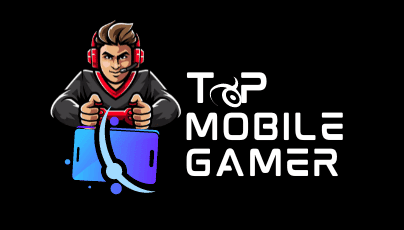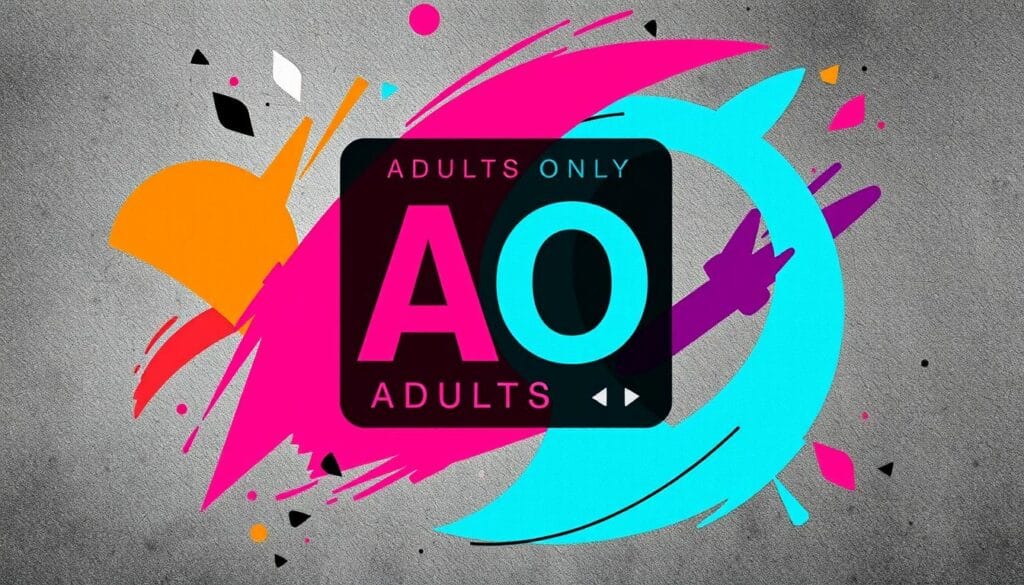The Entertainment Software Rating Board (ESRB) is key in video games. It gives age and content ratings to make sure games fit their audience. The Adults Only (AO) rating is the strictest, meaning games are for adults 18 and up only. These games have mature content like violence, sex, or gambling with real money, not for kids.
AO-rated games deal with tough topics and themes. But, they face big limits. Big gaming consoles like Sony, Nintendo, and Microsoft don’t let AO games on their systems. Twitch also bans adult-only content, making these games hard to find and play.
Still, some game makers keep pushing the limits with game rating Ao. These games start big talks about art, censorship, and video games’ role in society. As gaming grows, knowing about AO ratings is key for both creators and players.
Key Takeaways
- The ESRB assigns age and content ratings to video games, with the Adults Only (AO) rating being the most restrictive.
- AO-rated games contain mature content suitable only for adults aged 18 and above, including graphic violence, sex, or gambling with real currency.
- Major gaming consoles and streaming platforms often prohibit AO-rated games, limiting their visibility and accessibility.
- Despite the challenges, some developers continue to create AO-rated games that push the boundaries and spark important conversations.
- Understanding the significance of the AO rating is crucial as the gaming industry evolves and grapples with issues of artistic expression and censorship.
Understanding the ESRB Rating System
The Entertainment Software Rating Board (ESRB) has a rating system to help people choose the right games for their age. It gives clear info on what games are good for different ages. This helps parents pick games that fit their family’s values and likes.
Rating Symbols and Age Appropriateness
The ESRB rating symbols help figure out if a game is right for your age. These symbols are on game boxes and ads, making it easy to see if a game is good for you. The ESRB has ratings for:
- EC (Early Childhood): Suitable for ages 3 and up, with no bad stuff.
- E (Everyone): Good for ages 6 and up, with a bit of violence or mild words.
- E10+ (Everyone 10+): For ages 10 and up, with more cartoon violence and stronger words.
- T (Teen): For ages 13 and up, with violence, suggestive themes, and some bad words.
- M (Mature): For ages 17 and up, with lots of violence, blood, and strong words.
- AO (Adults Only): For ages 18 and up, with intense violence and graphic content.
- RP (Rating Pending): These titles are waiting for a final rating from the ESRB.
In 2023, 47% of games got an “Everyone” rating, and 23% got a “Teen” rating. This shows many games are safe for a wide range of ages.
Content Descriptors and Game Elements
The ESRB uses over 30 content descriptors to explain a game’s content. These descriptors cover many areas, like violence, sex, language, and more. They help understand why a game got its rating.
- Violence: Includes Animated Blood, Blood, and Fantasy Violence.
- Sexual Content: Covers Nudity, Sexual Themes, and Strong Sexual Content.
- Language: Includes Crude Humor, Language, and Strong Language.
- Substances: Talks about Alcohol Reference, Drug Reference, and Tobacco Reference.
- Gambling: Mentions Gambling Themes, Real Gambling, and Simulated Gambling.
The ESRB also talks about game elements like in-game purchases and user interaction. This helps parents understand what their kids might see or do in a game.
- In-Game Purchases: Allows buying digital goods with real money.
- User Interaction: Shows possible exposure to user-generated content.
- Shares Location: Shows the user’s location to others.
- Unrestricted Internet Access: Gives full internet access.
Parents should look at both the rating symbols and content descriptors. This helps them choose games that fit their family’s values and age standards.
By using the ESRB rating system, parents can control their kids’ gaming. This makes gaming safe and fun for everyone.
The AO Rating: What It Means and Its Impact
The Adults Only (AO) rating is the highest and most restrictive given by the Entertainment Software Rating Board (ESRB). It means a game is only for adults aged 18 and above. Games with intense violence, graphic sexual content, or real-money gambling get this rating.
The ESRB rates games in the United States, Canada, and some Latin American countries. Only 28 games have gotten the adults only rating. Most are adult video games with pornographic or strong sexual content.
Definition of the Adults Only Rating
The AO rating warns that a game is not for minors. The ESRB says games with this rating may have:
- Prolonged scenes of intense violence
- Graphic sexual content and/or nudity
- Gambling with real currency
But, the ESRB isn’t the only one rating games. PEGI rates games in Europe and the Middle East. Different places have different ratings, so the same game can get different ratings in different areas.
Consequences of Receiving an AO Rating
Getting an AO rating can hurt a game’s commercial viability. Nintendo, Microsoft, and Sony won’t let AO-rated games on their consoles. They worry about controversy, public opinion, and lawsuits.
Also, big retailers like Target, Best Buy, and Walmart don’t sell AO-rated games. This makes it hard for people to find and buy them.
“The AO rating is considered a ‘kiss of death’ in the U.S. as major retailers and console manufacturers do not carry or allow AO games on their platforms.”
Streaming sites like Twitch also ban AO-rated games. This limits how many people can see or play them. Many developers and publishers avoid making games that might get an AO rating. This is because it makes it hard to sell and market their games.
Limitations on Distribution and Marketing
AO-rated games face big challenges in getting out to players. They often only come out on personal computers. Even then, places like Steam might hide them by default.
Some erotic game publishers don’t even get a rating. They sell their games in places where there are no rules. But, digital stores and AI in game development have opened up new ways for adult games to reach players. By selling games on their own websites or special platforms, developers can get around the usual rules and find players who want mature content.
| Platform | Allows AO-Rated Games |
|---|---|
| Nintendo | No |
| Microsoft | No |
| Sony | No |
| Steam | Yes, but hidden by default |
| Twitch | No |
In short, the Adults Only rating warns players about a game’s mature content. But, it also makes it hard for developers and publishers to get their games out. This often leads to self-censorship or finding new ways to sell games.
Notable AO-Rated Games and Controversies
Video games have often pushed the limits of what’s acceptable. This has led to the rare Adults Only (AO) rating from the Entertainment Software Rating Board (ESRB). These controversial games have faced censorship, limited distribution, and intense public scrutiny. This is because of their mature themes, graphic violence, or sexual content.
Grand Theft Auto: San Andreas and the “Hot Coffee” Mod
Grand Theft Auto: San Andreas was first rated M (Mature) in 2004. But a hot coffee mod added a hidden minigame with explicit content. This led to a temporary AO rating, causing a big recall and patching effort by Rockstar Games.
Manhunt 2: Violence and Censorship
Manhunt 2, a psychological horror game from 2007, was initially rated AO. This was due to its graphic violence and disturbing themes. To avoid an AO rating, the developers censored the game. They blurred violent scenes and removed extreme content to get an M rating.
Hatred: Pushing the Boundaries of Acceptable Content
In 2015, hatred game was released. It was known for its protagonist’s goal of brutally killing innocent civilians. The game’s themes and graphic violence led to its removal from Steam and widespread criticism. Despite this, the developers saw the AO rating as a marketing advantage.
| Game | Year | Controversy |
|---|---|---|
| Custer’s Revenge | 1982 | Banned in one U.S. state due to its depiction of sexual violence against a Native American woman |
| The Guy Game | 2004 | Recalled due to the inclusion of a topless 17-year-old girl, constituting child pornography |
| Hatred | 2015 | Temporarily removed from Steam due to its focus on mass murder and misanthropic themes |
“AO-rated games often face an uphill battle in terms of distribution and acceptance, as many retailers and console manufacturers refuse to support them. This leads to a chilling effect on the development of adult-oriented content in the gaming industry.”
Though rare, AO-rated games highlight the ongoing debate on artistic freedom, censorship, and rating systems. These debates are crucial for protecting consumers and shaping public discourse.
The Rarity of AO-Rated Games
In the vast world of gaming, AO-rated games are rare. The Entertainment Software Rating Board (ESRB) has only given the “Adults Only” rating to 24 video games since it started. This rarity is due to the big challenges and limits of getting an AO rating.
Most AO-rated games have strong sexual content or are pornographic. But, four games got the AO rating just for their extreme violence. This shows that while sex is the main reason, too much violence can also get a game an AO rating.
Getting an AO rating has big effects on a game’s life. Nintendo, Microsoft, and Sony won’t let AO-rated games on their consoles. This limits where these games can be played, since console games are a big part of the market.
Also, most stores won’t sell AO-rated games. Even online, places like Steam hide these games by default. Twitch, a big live streaming service, also bans AO-rated content. This makes it hard for these games to be seen and played.
| Game | Developer | Year | Reason for AO Rating |
|---|---|---|---|
| Manhunt 2 | Rockstar Games | 2007 | Extreme violence |
| Hatred | Destructive Creations | 2015 | Graphic violence and mass murder simulation |
| Agony | Madmind Studio | 2018 | Disturbing content and gore (later edited for an M rating) |
| Leisure Suit Larry: Magna Cum Laude Uncut and Uncensored | High Voltage Software | 2004 | Strong sexual content (PC version only) |
AO-rated games are rare because developers and publishers are hesitant to get them. They face tough distribution challenges and fear bad publicity. So, many choose to make games for the “Mature” (M) rating or skip the ESRB rating. This makes AO-rated games a special part of the gaming world, for those who want to find and play them.
Exploring the Necessity of the AO Rating
The Adults Only (AO) rating by the Entertainment Software Rating Board (ESRB) sparks debate. Some say it limits creative freedom and mature themes. Others see it as key to keeping games safe for kids and fostering a family-friendly atmosphere.
Balancing Artistic Expression and Social Responsibility
Game makers face a challenge. They want to express themselves creatively but also protect kids from harmful content. The AO rating helps by keeping games with mature themes away from younger players.
The ESRB rating system tries to find a middle ground. It gives parents the info they need to choose games wisely. This way, the gaming world stays welcoming for families.
Protecting Minors from Inappropriate Content
The AO rating’s main goal is to shield young players from mature content. Games with an AO rating are meant for adults. They might include nudity, violence, or drug use.
| Platform | AO Game Policy |
|---|---|
| Sony, Nintendo, Microsoft | Do not allow AO games on their platforms |
| Major Retailers | Refuse to stock AO-rated games |
| PC (Steam) | Allows the sale of some AO games |
By controlling AO-rated games, the industry protects kids from harmful content. This shows the industry’s dedication to keeping gaming safe for families. Parents trust the ESRB ratings to help them choose games wisely.
“The ESRB rating system empowers parents to make informed decisions about the video games their children play, helping to protect minors from inappropriate content and foster a family-friendly gaming environment.”
The AO rating might not make all games successful. But it’s crucial for keeping the gaming world safe and enjoyable for everyone. It balances creative freedom with the need to protect young players.
Game Rating AO: Parental Awareness and Responsibility
In today’s world, it’s crucial for parents to know what their kids are playing. The Entertainment Software Rating Board (ESRB) helps a lot. It was started in 1994 to guide parents in choosing games for their kids. Now, 83% of American parents know about the ESRB ratings, up from 78% in 2005.
The ESRB has six age categories, from Early Childhood (EC) to Adults Only (AO). It also has 32 content descriptors on game packages. This helps parents make choices that fit their family’s values.
Being a responsible parent means more than just knowing the ratings. It’s about using them when buying games. 74% of parents do this regularly, up from 70% last year. Over half of parents also check content descriptors often, showing they’re proactive in keeping gaming suitable for their kids.
“As a parent, I always make sure to check the ESRB ratings and content descriptors before buying any video games for my kids. It’s our responsibility to ensure they’re playing games that are suitable for their age and maturity level.” – Sarah, mother of two
Parents can do more than just use ESRB ratings. Here are some steps to promote responsible gaming:
- Have open talks with kids about their games and content
- Set rules for gaming time and content
- Make sure kids have a balanced life with activities and hobbies
- Play games together to share experiences and monitor content
By being involved in their kids’ gaming, parents can help them have a good relationship with video games. This, along with ESRB resources, builds a strong foundation for responsible gaming habits.
For more help on choosing games, check out Top Mobile Gamer. They offer insights on games that can improve cognitive skills and brain health. By staying informed, parents can use video games to entertain and educate their kids.
The Future of AO Games in the Gaming Industry
The gaming world is always changing, and AO-rated games face an uncertain future. Despite the hurdles, there’s still room for growth and acceptance. Digital platforms like Steam and a growing demand for deep games might change the scene for AO titles.
Potential for Adult-Oriented Games on PC and Steam
PC gaming has always welcomed more mature and unique games. Steam, in particular, is a big supporter of adult-oriented games. Unlike consoles and traditional stores, Steam is open to these games if they meet certain rules.
Games like Hatred, despite its controversy, found success on Steam. This shows there’s an audience for AO games on the platform. As developers create more adult content, Steam could play a big role in the future of AO games.
“Steam has opened up a new avenue for AO-rated games, giving developers a chance to reach a wider audience and prove that there is demand for mature, boundary-pushing content.” – Industry Analyst
Emerging Trends and Changing Attitudes
Views on mature content in gaming are changing, opening up new chances for AO-rated games. There’s a focus on storytelling, artistic expression, and tackling tough themes. Developers are now exploring the potential of adult content more than ever.
But success for these games depends on more than just their controversial aspects. They need to offer great gameplay, engaging stories, and top-notch production. This way, AO-rated games can show they’re more than just entertainment, but also art.
| Trend | Impact on AO Games |
|---|---|
| Increasing acceptance of mature themes | More opportunities for AO-rated games to explore complex topics and push boundaries |
| Growth of digital distribution | Easier for developers to release AO games without relying on traditional retailers |
| Demand for high-quality, engaging content | AO games must deliver compelling experiences beyond controversial content to succeed |
The future of AO games is still up in the air. But with creativity, innovation, and a focus on meaningful experiences, adult-oriented games could find their place in the gaming world.
Comparing AO Ratings to Other Media Rating Systems
Looking at the AO (Adults Only) rating for video games, it’s helpful to compare it to other rating systems. These include ratings for movies and TV. These media rating systems guide us on what’s right for our age and what’s not in entertainment.
Movies: NC-17 and X Ratings
Movies get rated by the Motion Picture Association of America (MPAA). The NC-17 (No Children Under 17 Admitted) rating is like the AO for video games. It means the movie is for adults only because of its content. Movies with an NC-17 rating face the same issues as AO games, like less distribution and marketing.
Before NC-17, there was the X rating for adult films. But X became linked with porn. So, NC-17 replaced it to make a clear line between adult movies and explicit content.
Television: TV-MA Rating
TV uses the TV Parental Guidelines, with TV-MA (Mature Audience Only) being the adult rating. The TV-MA rating means the show is for grown-ups and might not be good for kids under 17. It’s similar to the AO rating in video games, showing it’s for adults.
Shows with a TV-MA rating might have violence, sex, bad language, or other adult themes. Like AO games, they air late at night and may have warnings for viewers.
| Media Type | Rating System | Adult-Oriented Rating |
|---|---|---|
| Video Games | ESRB | AO (Adults Only) |
| Movies | MPAA | NC-17 (No Children Under 17 Admitted) |
| Television | TV Parental Guidelines | TV-MA (Mature Audience Only) |
Each rating system has its own rules, but they all aim to warn us about adult content. Knowing about the AO rating and its movie and TV counterparts helps us understand the challenges of making content for adults. It also shows the importance of clear warnings and age guidelines for viewers.
Conclusion
The Adults Only (AO) rating in the ESRB rating system is key for finding video games with mature themes. These games are meant for adults only. Despite challenges, they spark important talks in the gaming world.
As views on adult content in games change, the AO-rated games’ future is unclear. But, it’s crucial for parents to use ESRB ratings and their own wisdom. This helps them decide what games are right for their kids.
Knowing about the AO rating helps parents keep gaming safe for their families. As games get more complex, the AO rating’s role in guiding players will keep being discussed. It shapes the world of adult-only gaming.
















